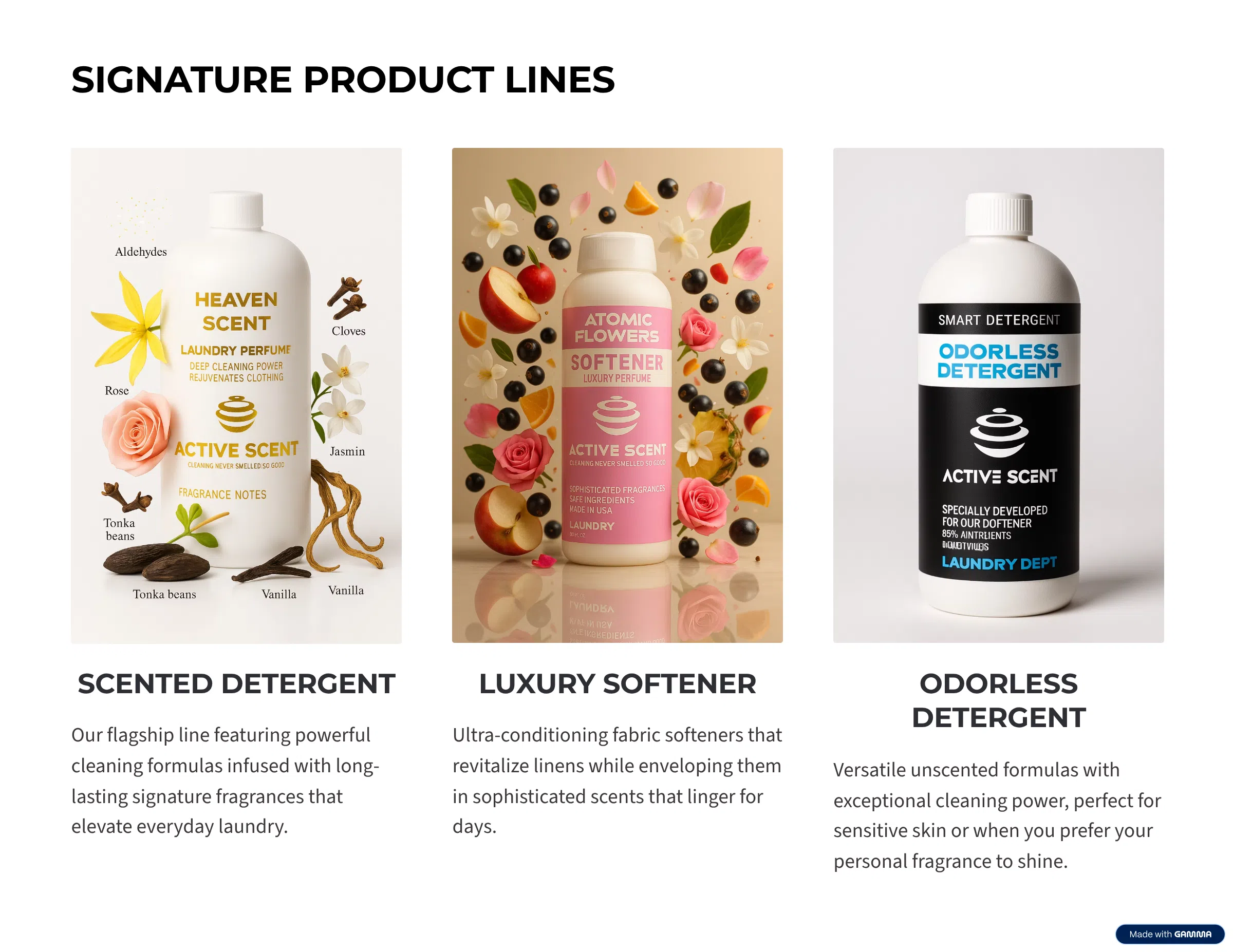
How to Get Mildew Smell Out of Clothes | Easy Cleaning Tips
That musty, earthy odor clinging to your clothes isn’t just a nuisance—it’s a clear sign of mildew. The good news? You can usually knock it out with a simple vinegar pre-soak and a follow-up wash with baking soda. This one-two punch goes after the microbial growth that your regular detergent just can't handle on its own.
But to really win the war against must, you have to understand the enemy.
Why Your Clothes Still Smell After Washing
You pull a load from the washer, expecting that fresh, clean scent, but instead, you get hit with a wall of damp, musty funk. It’s a frustratingly common problem, and it doesn't mean your machine isn't working. It’s a sign of a deeper issue that detergent alone is designed to mask, not solve.
The real culprit is a living thing: microbial growth. That mildew odor is the byproduct of mold and fungi thriving in damp, airless spaces. They release gassy compounds that create that signature smell. These microbes are surprisingly resilient, embedding themselves in the fibers of your clothes and the hidden crevices of your washing machine. Synthetic fabrics are especially good at holding onto them. Researchers have actually studied these specific compounds, which explains why the smell is so potent and hard to eliminate.
The Main Causes of Lingering Odors
More often than not, a few common habits are working together to turn your laundry room into a five-star resort for smelly microbes.
- Leaving Wet Clothes in the Washer: This is the number one mistake. Your warm, damp washing machine drum is the perfect incubator for mildew. Spores can start to multiply and create that smell in as little as 24 hours.
- A Contaminated Washing Machine: The machine itself is often the source. A sticky biofilm made of old soap scum, lint, and mineral deposits can build up inside the drum and rubber seals, trapping moisture and creating a permanent home for odor-causing bacteria.
- Improper Storage: Tossing damp towels straight into the hamper or cramming still-warm clothes into a humid closet is a recipe for disaster. Without proper airflow, fabrics can't dry completely, giving mildew the exact conditions it needs to flourish.
Key Takeaway: That musty smell isn't dirt; it's a sign of life. To fix the problem for good, you need to kill the fungi and bacteria, not just cover up the scent they leave behind.
Why Some Fabrics Smell Worse Than Others
Ever wonder why your gym clothes still stink after a wash, but your cotton tees come out smelling fine? It all comes down to the fabric.
Synthetic materials like polyester and nylon are woven incredibly tightly. This design is great for wicking sweat away from your skin during a workout, but it’s also fantastic at trapping body oils and the bacteria that feast on them. It creates a stubborn, locked-in odor that’s tough to wash out.
On the other hand, natural fibers like cotton and linen are far more breathable. They can still get mildewy if you leave them in a damp pile, of course, but they’re less likely to trap those biological smells so deeply. Knowing this can help you customize your attack plan for different items in your closet.
A Practical Guide to Eliminating Mildew Odors
Alright, it’s time to get hands-on and rescue your clothes from that lingering musty smell. Forget complicated chemical cocktails; some of the most powerful solutions are probably sitting in your pantry right now.
We’re not just masking the problem. We’re going straight to the source to eliminate the microbial culprits for good. Let’s turn those musty fabrics back into something you actually want to wear.
The Vinegar And Baking Soda Power Combo
Your first line of defense, and honestly the most reliable, is a one-two punch of white vinegar and baking soda. These kitchen staples are brilliant at breaking down and neutralizing whatever is causing that mildew funk.
Start with a pre-soak. I find that a solution of one part white vinegar to two parts water works wonders. Let the offending items soak for at least 30 minutes before washing.
When you’re ready to wash, toss the clothes in the machine with your regular detergent and add about a half-cup of baking soda right into the drum. The vinegar’s acid gets to work breaking down the smelly compounds, and the baking soda follows up by neutralizing the odor.
To really finish the job, dry everything in the sun if you can. Those UV rays are fantastic at killing off any stubborn, lingering spores.
A Quick Word of Caution: Never, ever mix vinegar and bleach. The combination creates toxic chlorine gas, which is incredibly dangerous. If you need to use both, run them in completely separate wash cycles.
Bringing In Stronger Alternatives
Sometimes, a truly stubborn case of mildew just won't quit. If the vinegar and baking soda trick doesn’t quite get you there, it's time to bring in some slightly bigger guns.
For a quick-reference guide, I've put together this table comparing the most effective methods.
Mildew Removal Methods At A Glance
| Method | Best For | Instructions | Fabric Safety |
|---|---|---|---|
| Vinegar & Baking Soda | Everyday mildew, workout clothes, towels. | Pre-soak in 1:2 vinegar/water solution. Add 1/2 cup baking soda to the wash cycle. | Generally safe for most fabrics, but test on delicates first. |
| Oxygen Bleach | Brightening whites and colors, stubborn smells on durable fabrics. | Add to the wash cycle with detergent, following package directions. | Color-safe. Avoid on wool, silk, and leather. |
| Borax | General deodorizing boost, especially with hard water. | Add 1/2 cup to the wash cycle with your detergent. | Safe for most machine-washable fabrics. Avoid on delicate materials. |
This table should give you a solid starting point for tackling just about any mildew situation you might encounter.
Now, let's break down those stronger options a bit more.
Oxygen Bleach
- This is your color-safe alternative to traditional chlorine bleach. It uses sodium percarbonate to lift stains and kill the bacteria causing the odor.
- Just add the recommended amount to your wash along with your detergent. It really comes alive in warm or hot water, so use that to activate its full power. It’s my go-to for funky-smelling towels and gym clothes.
Borax
- This is a naturally occurring mineral that acts as a fantastic cleaning booster and deodorizer.
- Add a half-cup to your laundry load with your detergent. It's especially great if you have hard water, as it helps soften it so your detergent can work more effectively while also fighting fungal growth.
Of course, none of this works as well without a solid foundation. Using a high-quality detergent is non-negotiable. If you're aiming for a deep clean without harsh additives, exploring a laundry detergent without chemicals is a smart move. It perfectly preps your fabrics for odor removal before you add back a luxurious fragrance.
The Final, Crucial Step: Drying Properly
Don't let your hard work go to waste in the final stretch. How you dry your clothes is just as important as how you wash them. Get this part wrong, and that musty smell will be back before you know it.
The absolute gold standard is line-drying in direct sunlight. The sun’s UV rays are a natural disinfectant, zapping any mildew spores that somehow survived the wash.
If you have to use a machine dryer, keep these tips in mind:
- Don’t Cram It Full: Your clothes need room to tumble. Good airflow is essential for even drying.
- Use The Right Heat: High heat is effective but can damage certain fabrics. Stick to the appropriate setting for the load, and maybe toss in a few wool dryer balls to speed things up and keep clothes from clumping.
- Make Sure They’re Completely Dry: Before you fold anything, double-check the seams, cuffs, and waistbands. They must be 100% dry. Even a tiny bit of lingering moisture is an open invitation for mildew to return.
The Secret to Lasting Freshness After the Wash
Getting that mildew smell out is a victory, but let’s be honest—it’s only the beginning. The real art isn’t just making your clothes smell like nothing. It’s about infusing them with a fragrance that’s intentional, luxurious, and uniquely you.
Think of it like a perfumer at work. Before you can introduce a signature scent, you need a perfectly clean, neutral canvas. This is where a truly high-performance, fragrance-free detergent becomes non-negotiable.
It’s all about creating a pure foundation. A powerful odorless detergent does the hard work of deep cleaning, eradicating every trace of grime and odor without leaving behind its own generic "clean laundry" scent that would only muddle the final experience.
Building a Scent That Lasts
With your fabrics truly clean—free from any lingering mustiness or competing detergent smells—they are now primed for something exceptional. This is the moment a luxury scented fabric softener can finally perform as intended.
Without anything to fight against, its complex fragrance notes can fully bloom and bond with the fabric fibers. You’re no longer just masking odors; you are deliberately layering a scent, just as you would with a fine personal perfume.
This is what creates a fragrance that feels sophisticated and deliberate.
A luxury softener with notes of earthy patchouli, warm amber, and smoky guaiac wood isn't just adding a smell. It’s crafting an olfactory statement—a bold tribute to the spirit of renowned fragrance houses.
At Active Scent, our lead perfumer and aroma designer masterfully master light and shadow, creating scents that are as enigmatic as they are energetic and refreshing. Inspired by the luxurious complexity of raw materials, we use premium, avant-garde, and sometimes exotic ingredients to olfactorily capture the essence of contemporary individuality.
The result is a deep, refined aroma that lingers beautifully. It transforms a routine chore into a ritual of self-care, turning the simple act of getting dressed into a richer, sensory experience.
To master this process, you must start with the right base. Active Scent's odor-free laundry detergent has been carefully formulated for a deep and effective clean, without competing fragrances. It's the ultimate neutral base, created to perfectly complement our range of luxury scented fabric softeners.
This intentional layering is the core of how to keep clothes smelling fresh for days, not just hours. By treating your laundry with the same artistry as your personal fragrance, your clothes will never just feel clean—they’ll feel exceptional.
How to Prevent Mildew from Ever Coming Back
You’ve banished that stubborn mildew smell. That’s a victory, but the real art lies in making sure it never returns. It’s time to move from a quick fix to a new ritual—a proactive strategy that breaks the cycle of musty laundry for good.
This isn’t about one big deep clean. It's about cultivating a few simple, consistent habits that create an environment where mildew simply can't get a foothold. Think of it as a new laundry philosophy, one built on airflow, dryness, and a pristine machine.
Master Your Laundry Day Routine
The most significant impact comes from the small shifts in your weekly habits. These are the foundational rules for keeping your clothes smelling not just clean, but exceptionally fresh.
- Move Clothes Immediately: This is the golden rule. Never, ever let wet clothes sit. As soon as the cycle finishes, transfer them to the dryer. Even just a few hours in that warm, damp drum is an open invitation for mustiness to take hold.
- Don't Overload the Machines: Your washer and dryer both need room to work their magic. An overstuffed washer can't clean properly, and a packed dryer won't circulate enough air, leaving damp spots that turn sour fast.
- Ensure Everything is Bone-Dry: Before you fold anything, do a final check. Pay close attention to the thick spots—waistbands, collars, the heels of your socks. Even the slightest hint of dampness is enough to bring that earthy smell creeping back.
Target the Source Your Washing Machine
More often than not, your washing machine is the overlooked source of recurring mildew. A sticky residue of old detergent, fabric softener, and body oils can build up in the drum and gasket, creating a permanent breeding ground for odor.
You have to clean the machine itself. At least once a month, run an empty, hot water cycle using a dedicated washing machine cleaner or two cups of white vinegar. This dissolves the gunk and sanitizes the interior.
For front-loaders, the rubber door seal is the prime suspect. After you're done with laundry for the day, give it a quick wipe with a dry cloth to get rid of trapped water. And most importantly, leave the washer door ajar between uses. It’s a simple step, but it allows air to circulate and the drum to dry out completely, making it an inhospitable place for mildew.
Mildew thrives in moist, warm, and poorly ventilated spaces. It’s a surprisingly common issue, with an estimated 20-30% of households worldwide dealing with mildew odors in their laundry. This isn't just about an unpleasant smell; the spores can degrade fabric fibers and even trigger allergic reactions. Prevention is a matter of both freshness and health.
Improve Airflow in Storage Spaces
Finally, think about where your clean clothes live. A dark, humid closet with no ventilation can undo all your hard work. Make sure there’s enough space between garments for air to move freely. You can even place moisture absorbers, like silica gel packets or closet dehumidifiers, to keep the environment perfectly dry.
By adopting these habits, you shift from constantly fighting mildew to creating a laundry system that naturally resists it. When you combine this new routine with a truly high-performance detergent, like the best smelling laundry detergent inspired by fine fragrances, your clothes won't just be free of mustiness—they'll carry a sophisticated scent that lasts.
This is the ultimate defense.
Don't Just De-Stink. Create a Signature Scent.
Once you've mastered how to get that mildew smell out of your clothes, you’ve done more than just clean them—you've created a blank canvas. But why stop there? Why settle for laundry that just smells neutral when it could become a true extension of your personal style?
This is where the real art begins, turning a mundane chore into a deliberate act of luxury with powerful detergents fused with luxurious fragrances.
Think beyond simply "clean." Your scent is a huge part of your identity, and your clothes can carry that signature just as beautifully as a fine perfume. By choosing a laundry experience inspired by the world of high fashion, you're infusing your fabrics with a presence that’s confident, memorable, and uniquely you.
Crafting a Scent with Real Intention
The journey to an exceptional laundry fragrance is a lot like the work of a master perfumer. It all starts with a serious commitment to quality and complexity. Forget those simple, one-note "fresh scents"—this is about building a layered, evolving aroma that tells a story.
Inspired by the spirit of iconic French houses like Dior, Mugler, Chanel, and Le Labo, Active Scent fragrances are bold, mysterious, hypnotic, and unforgettable olfactory statements. The compositions fuse deep, earthy patchouli with the burning radiance of amber, while fiery pimento berries ignite the composition with spice and warmth.
This rich foundation is then enveloped in the creamy depth of tonka bean and rich guaiac wood, while a touch of styrax adds a smoky elegance. The result is a scent that doesn't just fade away—it leaves a lasting impression.
At Active Scent, our lead perfumer and aroma designer masterfully master light and shadow, creating scents that are as enigmatic as they are energetic and refreshing. Each fragrance is composed of natural and ethically sourced ingredients, offering a refined and distinguished sensory experience.
From Chore to Luxurious Ritual
This whole philosophy completely redefines laundry day. It’s no longer about fighting musty odors, but about curating an experience. Each product delivers a spark of joy, a touch of boldness, and a surge of confidence, all wrapped up in a powerful and exceptional product.
The secret is a powerful clean with zero interference. Active Scent's odor-free laundry detergent has been carefully formulated for a deep and effective clean, without competing fragrances. It's the ultimate neutral base, created to perfectly complement our range of luxury scented fabric softeners.
Ultimately, this transforms your laundry from a simple task into a ritual of self-expression. It ensures your clothes feel as exceptional as they look, making a statement long after the wash cycle ends.
LAUNDRY NEVER FEELS SO GOOD!
Common Questions About Laundry and Mildew Smells
Even when you follow every step, that stubborn mildew scent can throw a few curveballs. We get it. Let's walk through some of the most common questions that pop up, so you can finally master the art of getting that musty smell out of your clothes for good.
Can I Save Mildewed Vintage Clothes?
Absolutely, but you have to treat them with a delicate touch. Vintage fabrics are fragile and won't survive the aggressive tactics we use on modern textiles. Forget hot water or harsh chemicals.
Start with the gentlest approach: a cold-water pre-soak with a single cup of white vinegar. From there, run them on a delicate cycle using a high-performance, odor-free detergent that can clean deeply without harming those precious fibers. Always, always air-dry vintage pieces away from direct sunlight to prevent fading and damage.
What if the Musty Smell Comes Back?
If that mildew scent creeps back in, it almost always points to one of two culprits: your washing machine or your closet. It's a classic case of a contaminated environment.
First, give your washer another deep clean. This time, be meticulous. Pay extra attention to the rubber gasket around the door and the detergent dispenser—these are prime hiding spots for gunk. Then, turn your attention to where you store your clothes. Assess your closets or drawers for humidity and do what you can to improve airflow. If the smell still clings to one specific item after all this, the mildew might be too embedded in the fibers. It might be time to let it go.
It’s a common myth that you can't use vinegar and baking soda together. You can, just not at the exact same time. Add baking soda at the start of the wash and vinegar during the rinse cycle. This prevents them from neutralizing each other, letting each one work its magic independently.
How Often Should I Clean My Washing Machine?
To keep your machine performing at its peak—and to stop it from becoming the source of the problem—you need to clean it at least once a month.
If you have a big family, run loads constantly, or live somewhere with high humidity, you'll want to up that to every two weeks. Consistency is everything. A clean machine is the only way to truly banish those stubborn smells for good.
This isn’t just about maintenance; it’s about creating a perfectly neutral canvas. Once your machine is pristine and your fabrics are truly odor-free, you can introduce a fragrance that makes a statement.
Transform your laundry from a chore into a ritual. With Active Scent, your clothes won't just be free of mildew—they'll carry a bold, luxurious fragrance inspired by iconic perfume houses. Experience the difference at https://active-scent.com.










